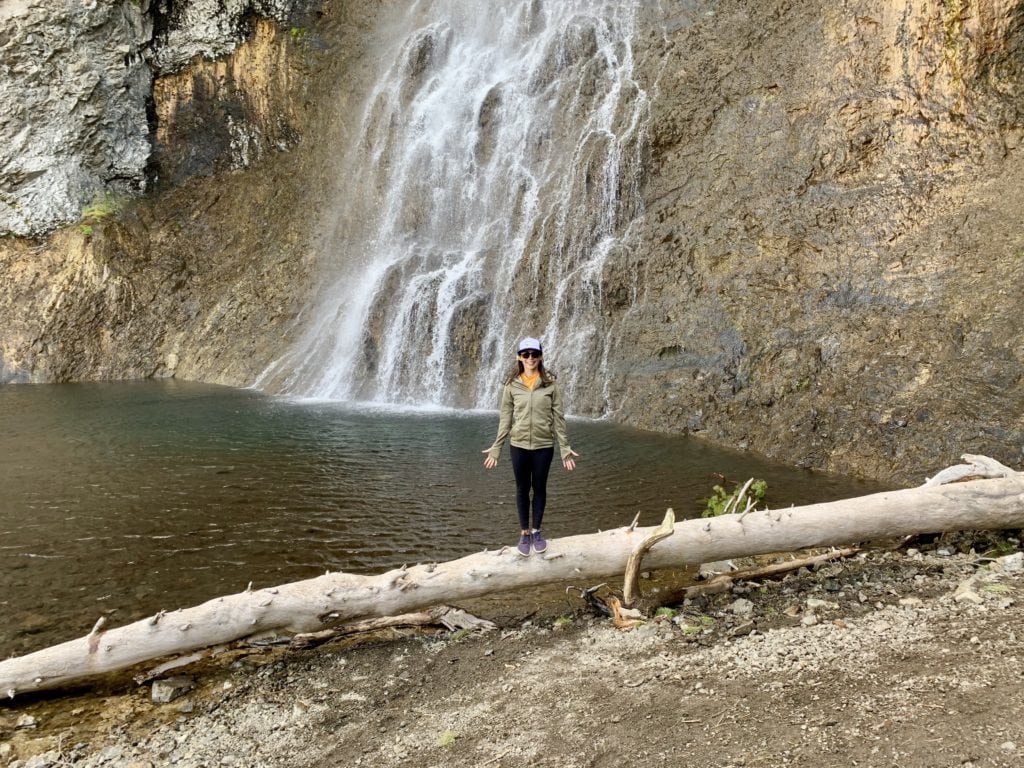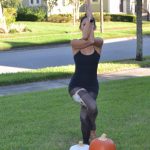Tadasana or Samasthiti
Your Monthly Yoga Pose

Imagine a mountain. What comes to mind?
I was recently in Montana and Wyoming visiting Yellowstone and the Grand Tetons, and I stood in awe at the majesty of mountains. They are upright, steady, cool up top, immovable. In yoga, mountain pose (tadasana or samasthiti) is exactly that. The posture itself is a basic standing posture.
In Sanskrit, tada means mountain, sama means upright, straight, unmoved, and sthiti means standing still and steadiness. You may hear both terms in yoga classes. Tadasana implies the posture, where samasthiti implies the state of being. In essence, you can bring a sense of samasthiti to every posture.
Mountain pose is accessible to most beings. Due to the ease of the posture, a large degree of mindfulness is needed. We all have habits in where we hold our weight. Take a look at an old pair of shoes and check out their soles. You’ll likely find one that is worn down more than the other.
As a teen, I remember having a pair of boots that I loved! I was a grunge kid from the ’90s, and my goal was to look like a Seattle-based band member, even though I lived in Miami. After months of wearing my boots to school, I noticed the outer heel edge was so worn that the heel of the shoe was beginning to resemble a triangle. This was the first time I noticed my natural tendency to supinate, or roll my feet outwardly, thus placing weight on the pinky edge of my feet.
Mountain pose, when done correctly, teaches us to place an even and balanced weight and carry the evenness throughout the rest of the body by allowing the hips, spine, and joints to have an even distribution of weight. In Light on Yoga, B.K.S. Iyengar says that by practicing mountain pose correctly, the hips are contracted, the abdomen is pulled in, and the chest is brought forward; one feels light in the body, and the mind acquires agility. In contrast, if we stand with the body weight thrown only on the heels, we feel the gravity changing; the hips become loose, the abdomen protrudes, the body hangs back, and the spine feels the strain. Consequently, we soon feel fatigued, and the mind becomes dull. It is therefore essential to master the art of standing correctly.
- Stand straight with your feet together. It is also possible to have the feet slightly apart; each person will have a different, natural width between the feet. It should not strain the hips to bring the feet close together. Traditionally, the heels and the big toes are touching.
- Lift all 10 toes and allow them to lie flat on the floor.
- Bring awareness to where you naturally distribute your weight and shift your weight to evenly distribute throughout your feet.
- Activate the legs, feeling strength and steadiness.
- Contract the hips and bring the stomach and lower belly in.
- Straighten the spine, feeling a lift all the way up to the top of your head.
- The arms may be placed above the head but are often left by the side of the thighs.
- Bring awareness to your breath and feel the ease of balance and the opening of the chest cavity in mountain pose.
- Take 10 full breaths in and out.
Namaste.


